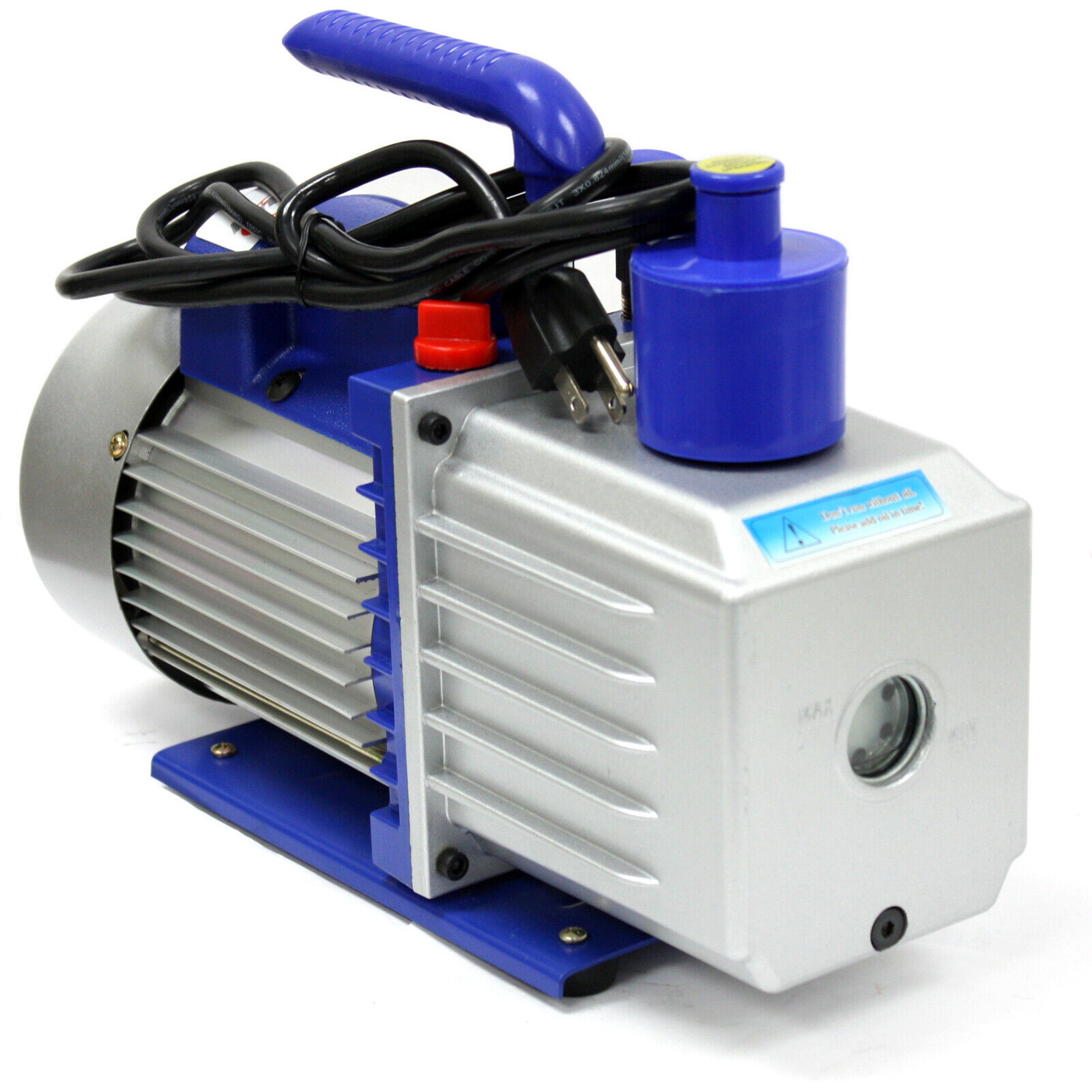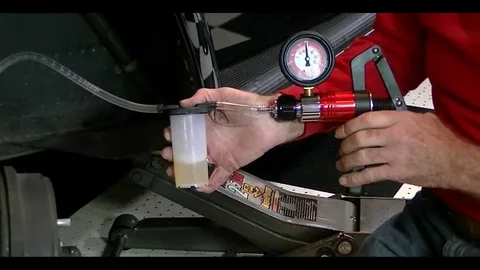Optimizing Thermoformed Part Quality with Vacuum Pump Technology: A Comprehensive Guide
Thermoforming remains a crucial process in manufacturing, shaping plastic sheets into precise forms. This method is highly significant due to its efficiency and versatility. The global market for thermoformed plastics is anticipated to expand considerably, reaching approximately USD 74.12 billion by 2034. Vacuum pumps are integral to this process, as they generate the necessary suction to mould the plastic sheets accurately. The performance of vacuum pumps directly impacts the quality of the thermoformed part. Mastering the use of vacuum pumps enhances product consistency and operational efficiency.

The basic principle of vacuum pump
Definition and Principle
Definition of vacuum pump
A vacuum pump is a device designed to remove gas molecules from a sealed volume, creating a partial vacuum. This process involves the movement of gas particles from one region to another. The vacuum pump’s primary function is to alter the pressure states within a system. Otto von Guericke invented the first vacuum pump in 1650, marking a significant advancement in technology. Vacuum pumps have evolved over time, becoming essential components in various industrial applications, including thermoforming.
Working principle
The working principle of a vacuum pump revolves around changing high and low-pressure states. The pump moves gas molecules from a confined space, reducing the pressure and creating a vacuum. This process is crucial in thermoforming, where the vacuum pump generates the necessary suction to shape thermoplastic sheets. Different types of vacuum pumps, such as rotary vane, claw, and screw pumps, are utilised based on the application and the required ultimate vacuum pressure. These pumps play a vital role in determining the pumping speed, which directly influences the efficiency and quality of the thermoformed part.
Types of Vacuum Pumps Used in Thermoforming
Rotary Vane Pumps
Features and benefits
Rotary vane pumps are a staple in the thermoforming industry. These pumps excel in creating deep vacuums, which is essential for shaping thermoplastic materials. The design of rotary vane pumps includes a rotor with vanes that slide in and out, creating a vacuum as they rotate. This mechanism ensures a consistent and reliable performance. Rotary vane pumps are known for their energy efficiency, making them a cost-effective choice for manufacturers. The pumps operate quietly, reducing noise pollution in manufacturing environments. The durability of these pumps also contributes to their widespread use, as they require minimal maintenance over time.
Common applications
In the realm of thermoforming, rotary vane pumps find applications in various processes. These pumps are ideal for vacuum forming, where precise shaping of plastic sheets is crucial. The pumps also play a significant role in pressing applications, ensuring uniform pressure distribution. Rotary vane pumps are utilised in laminating processes, particularly in industries producing solar modules and smartphone displays. The versatility of these pumps makes them suitable for a wide range of thermoforming tasks.
Claw Pumps
Features and benefits
Claw pumps offer distinct advantages in thermoforming operations. These pumps feature a unique design with two rotors shaped like claws, which rotate in opposite directions. The claw design enables efficient air compression, resulting in a high-performance vacuum. Claw pumps are oil-free, reducing the risk of contamination in sensitive applications. The pumps boast a long service life due to their robust construction. Claw pumps are also energy-efficient, contributing to lower operational costs for manufacturers.
Common applications
Claw pumps are commonly used in thermoforming for applications requiring clean and dry vacuums. These pumps are ideal for tray formers, blister packs, and clam shells, where precision and hygiene are paramount. In the furniture industry, claw pumps facilitate pressing operations, ensuring high-quality finishes. The pumps’ ability to handle dry air makes them suitable for environments where moisture control is critical.
Screw Pumps
Features and benefits
Screw pumps stand out for their ability to handle large volumes of air efficiently. These pumps utilise a pair of screw rotors that rotate in opposite directions, compressing air and creating a vacuum. Screw pumps are renowned for their high pumping speeds, making them ideal for fast-paced thermoforming operations. The pumps operate without oil, ensuring a clean vacuum environment. Screw pumps are durable and require minimal maintenance, offering a reliable solution for manufacturers.
Common applications
In thermoforming, screw pumps are preferred for laminating processes, especially in the production of flat panels and electronic displays. These pumps excel in applications where rapid evacuation is necessary, such as in the creation of contoured packaging. Screw pumps are also used in processes involving large thermoformed parts, where their high capacity proves advantageous. The pumps’ versatility and efficiency make them a valuable asset in various thermoforming scenarios.
Enhancing Efficiency and Quality with Vacuum Pumps
Role of Vacuum Pressure
Importance of maintaining optimal pressure
Maintaining optimal vacuum pressure is crucial in the thermoforming process. The vacuum pump must generate a consistent and adequate level of suction to shape the thermoplastic sheets effectively. Insufficient pressure can lead to incomplete forming, resulting in defects in the final product. Excessive pressure may cause damage to the material, compromising the integrity of the thermoformed part. Manufacturers must calibrate vacuum pumps precisely to achieve the desired pressure levels. This calibration ensures that each thermoformed part meets the required specifications.
Impact on product quality
The quality of the thermoformed part relies heavily on the performance of the vacuum pump. A well-maintained vacuum pump ensures uniform pressure distribution across the plastic sheet. This uniformity prevents warping and ensures that the final product has a smooth surface finish. Consistent vacuum pressure also contributes to the structural integrity of the thermoformed part. High-quality products enhance customer satisfaction and reduce the need for costly rework. Manufacturers can achieve superior product quality by investing in reliable vacuum pump technology.
Evacuation Speed
How evacuation speed affects the process
Evacuation speed plays a significant role in the efficiency of the thermoforming process. A faster evacuation speed allows for quicker moulding of the plastic sheets, increasing production rates. However, an excessively high speed may lead to uneven forming, causing defects in the thermoformed part. Conversely, a slow evacuation speed can result in prolonged cycle times, reducing overall productivity. Manufacturers must find a balance between speed and quality to optimise the thermoforming process.
Techniques to optimise speed
Regular maintenance of vacuum pumps ensures that they operate at peak efficiency. Cleaning and inspecting the pumps prevent blockages that could slow down the evacuation process. Upgrading to advanced vacuum pump technology can also enhance speed and performance.Studies have shown that dry vacuum pumps generally provide faster evacuation speeds due to oil-free operation. Manufacturers can improve efficiency by selecting a vacuum pump that suits their needs.
Practical Maintainance and Advantages
Maintenance and care of vacuum pumps
Daily maintenance
Regular maintenance of vacuum pumps ensures optimal performance in thermoforming processes. Operators should inspect vacuum pumps daily to identify any visible wear or damage. Cleaning the pump’s exterior prevents dust accumulation, which can affect efficiency. Checking the oil level is crucial for maintaining the pump’s functionality. Fresh oil enhances the pump’s ability to create a deep vacuum. Operators should replace the oil frequently, especially after significant jobs. Keeping the oil pure prevents contamination and extends the pump’s lifespan.During daily operation and maintenance, the vacuum pump must have adequate and excellent ventilation conditions, and the ambient temperature must be below 40 degrees Celsius. It must be in a clean place without dust, water, or oil, and it must not be exposed to direct sunlight. There must be enough space around it to facilitate the inspection, maintenance, assembly, and disassembly of the pump.
Common faults and solutions
Vacuum pumps may encounter common faults that disrupt operations. A decrease in vacuum pressure often indicates a leak in the system. Inspecting seals and connections can help identify the source of the leak. Blockages in the pump can reduce evacuation speed. Regular cleaning and inspection prevent such blockages. Unusual noises from the pump may signal mechanical issues. Lubricating moving parts can resolve these problems. If the pump fails to start, checking electrical connections is advisable. Replacing worn-out components ensures the pump operates efficiently.
Advantages of Vacuum Technology
Improved product consistency
Vacuum technology plays a pivotal role in achieving consistent product quality. The precise control of vacuum pressure ensures uniform shaping of thermoplastic sheets. Consistent pressure distribution prevents defects such as warping or uneven surfaces. High-quality thermoformed parts enhance customer satisfaction. Reliable vacuum pumps contribute to the structural integrity of the final product. Manufacturers benefit from reduced rework and waste, leading to cost savings.
Cost-effectiveness and efficiency
Vacuum technology offers significant cost-effectiveness in thermoforming operations. Efficient vacuum pumps reduce energy consumption, lowering operational costs. The durability of vacuum pumps minimises maintenance expenses over time. Investing in high-performance vacuum technology increases production rates. Faster evacuation speeds lead to shorter cycle times, boosting overall productivity. Manufacturers can achieve a competitive edge by optimising their thermoforming processes with advanced vacuum pumps.

Conclusion
Mastering thermoforming with vacuum pumps requires understanding key principles. Vacuum pumps play a crucial role in shaping thermoplastic sheets. Different types of pumps, such as rotary vane, claw, and screw pumps, offer unique benefits. Maintaining optimal vacuum pressure ensures high-quality products. Efficient evacuation speed enhances productivity. Regular maintenance of vacuum pumps prevents common faults. Vacuum technology improves product consistency and cost-effectiveness. Manufacturers should apply this knowledge to enhance their thermoforming processes. Practical application of these insights can lead to significant advancements in manufacturing efficiency and product quality.
